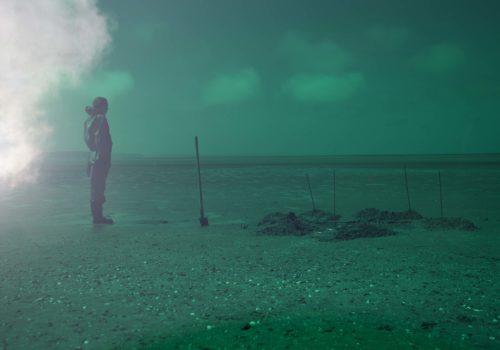Each year, Paris Photo highlights the emerging scene through a dedicated sector that embodies the vitality of the photographic field. For this edition, the return of the fair to the Grand Palais provides more space for it. L’Œil de la Photographie met with Anna Planas, the artistic director of the fair and the designer of the Emergence sector.
What is the main focus of the Emergence sector this year?
It aligns with the general theme of the fair, which is to showcase the diversity of the photographic medium. This year, we expanded the sector from 16 to 23 projects. We wanted to highlight the vitality of the photographic art scene through very different works, ranging from documentary to experimental. All the projects in the Emergence sector are solo shows to allow for a deeper dive into each artist’s work. Most are young artists whose work is still relatively unknown, which really allows to discover the work in depth.
Are there prominent themes that emerge?
In terms of form, you can go from one booth with Miguel Angel Tornero’s collage work on the Altamira cave through layered, voluminous collages to a return to old photographic techniques like the camera obscura or more experimental approaches like Ester Vonplon’s, who uses the light from a tunnel to reveal images on photosensitive paper. As for themes, many artists address issues of identity, gender, ecology, or memory—subjects that are often explored by the younger generation. Alice Pallot envisions dystopian scenarios linked to the environment, while the self-portraits by Togolese artist Helene Amouzou capture the ten years she spent waiting for asylum in Belgium. There’s a natural flow in the selection between techniques and subjects.
The body seems to be a central concern for many artists.
Yes, some artists work with the body in a way that is almost sculptural, either in their photographic approach or in the objects they create with the image itself. For example, the highly sculptural self-portraits of Camille Vivier or Isabelle Wenzel. In a different style, Lucile Boiron creates sculptural works by encasing her photographs in an organic material, turning them into objects.
What is the state of emerging photography today, and where is it heading?
I try to avoid labeling trends, especially today, when everything is so pluralistic and diverse. This is particularly evident with the younger generation. At the fair, we have emerging artists who explore digital techniques with artificial intelligence and digital art tools, while others return to older techniques or physically manipulate prints. Documentary photography freely combines pure images, documents, archives, sound, and video.
What do young galleries bring to Paris Photo?
While coming to Paris Photo allows them to gain a slightly more institutional presence, they bring a freshness that appeals to a new generation of collectors. Prices in the Emergence sector differ somewhat from the main sector, with prints generally starting at 1,000/2,000 euros and going up to 10,000 euros. This is our way of offering works to younger collectors with artists just entering the market.
What other initiatives does Paris Photo have for the emerging scene?
There’s the wonderful Carte Blanche project, established a few years ago in partnership with Picto and Gares & Connexions. Each year, a jury meets in advance of Paris Photo to select the work of four photography students, which is then displayed in an exhibition at Gare de Lyon. They are also invited to present their work throughout the fair and connect with professionals. It’s a support program. This year, the laureates are Alice Poyzer (UWE – University of the West of England, UK), Anna Jocham (Kunstakademie Düsseldorf, Germany), Joel Jimenez Jara (Universitat Autònoma de Barcelona, Spain), and Toma Gerzha (Gerrit Rietveld Academie, Netherlands). Besides Carte Blanche, there’s also the Paris Photo-Aperture Photobook Awards, which rewards the publication of a first photobook with a $10,000 grant.
More informations :
















